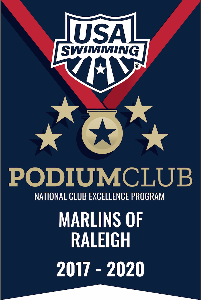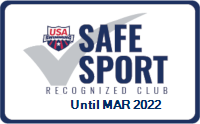Developmental Training Philosophy
- MOR’s Training Philosophy is designed to have swimmers swim their fastest in their late teens when they are physically most mature. We have been very successful in having our swimmers continue to progress into their late teens and 20’s. This has lead MOR to have 45 alums currently swimming on college teams in 2018, more than any other team in the area. These include top 10 teams such as NC State, Kentucky, Florida as well as Division 2 and 3 schools such as Queens and Kenyon. We understand that a child’s swimming progression is a long term process and we aim to avoid providing too much too soon for young swimmers that could provide short term gains but sacrifice long term success that could limit their ultimate potential in the sport of swimming. That continuing to improve has lead to a high retention rate of our swimmers. This doesn’t mean we do not challenge young athletes to excel, but rather we do it in an organized step by step process. To that end, we strive to always provide more as they progress through each level of our program. This comes in the form of the following:
- Increased # of practices
- Increased length of practices
- Increase in yards swum
- Increase use of inwater resistance training for 15-Overs
- Increase in dryland from flexibility, to calisthenics, to body weight exercises to bands/med balls, to weight training
- Increase in complexity and specificity of goal setting
- Increase level of competitions
- Gradual advance in suits worn from Speedo endurance, to aquablade, to LZR Elite
Progress towards Goals and objectives are reviewed semi-annually with our staff.
- AG1: Goal is to focus on Technique in a fun environment. We have nurturing coaches who will help the swimmers learn while also making friends and having fun. At this age young people develop the majority of their flexibility so we try to take advantage of this window of opportunity. Competitions should be fun learning experiences where swimmers with lots of feedback on what they did well and what they can improve upon. Sometimes technique changes result in slower times before the increase in speed comes as the swimmers become more accustomed to the changes.
- AG2: Goal is to continue to focus on technique, improve starts, turns, introduce race strategies and use dryland to improve coordination. Training is increased but fun is still the key component along with working together as a group. Competitions continue to be fun learning experiences. Swimming on relays helps develop the team concept.
- AG3 & AG4: Goal is to begin to increase training volume while maintaining proper technique. Learning more advanced turn techniques particularly for IM races. Proper technique on more advanced calisthenics which will lead to small strength gains. Competition is designed to be appropriate for each individual’s skill level. State level competition is targeted but realizing everyone progresses at their own rate.
- Senior 1: Goal is to provide a flexible program for swimmers who have other commitments as well as an opportunity for swimmers to transition from AG 3 or AG4 or for a late starter in the sport to have an entry level place where they can progress. Proper technique is emphasized while continuing to progress aerobic fitness.
- Senior 2 & Senior 3: Goal is to develop the aerobic base in order to increase endurance capacity as their bodies are now receptive to this type of training. Proper technique is still emphasized, however being fit enough to maintain proper technique over time is important. Regional competition is targeted and raising the the athlete’s commitment level is important to continue to progress.
- Senior Elite: Goal is to continue to develop aerobic base while becoming somewhat more specific in stroke selection and training. Increase strength training is introduced. Race pace training and more in water resistance exercises are used. Attending national level competition is sought out for those who are qualified.









